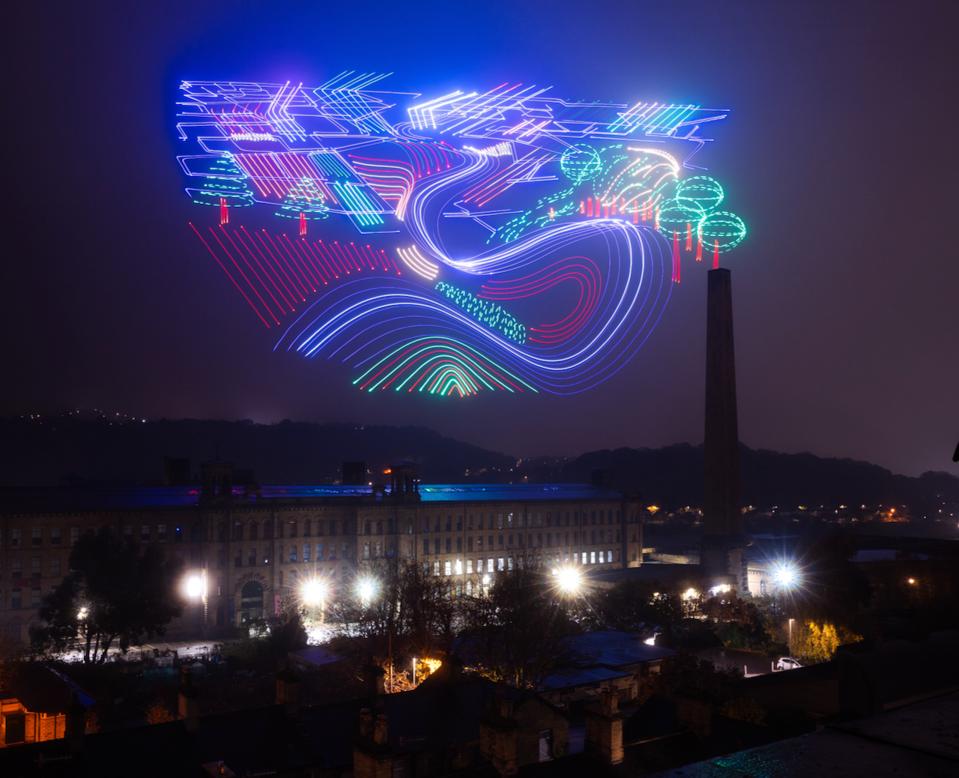Some of artist David Hockney’s most famous paintings hung in midair last week when hundreds of drones recreated them as luminous compositions over the artist’s English hometown.
Over 600 illuminated drones flew in choreographed formations to recreate airborne versions of works spanning Hockney’s career. Among them were “A Bigger Splash,” the artist’s 1967 pop-art depiction of a swimming pool next to a modern house; “Tennis,” a 1989 drawing Hockney created with 144 separate faxed sheets that comprised the whole; and his “Self Portrait” from 2021.
The Hockney works flickered into view in colored lights before gradually fading as a crowd watched from below. For most of the presentation, produced by drone light show company Skymagic, synchronized drones formed Hockney images using moving points of light.
For one creation, however, drone swarm technology met long-exposure photography to reveal an image invisible to the naked eye — a light painting of “Garrowby Hill,” Hockney’s swirling, stylized 1998 oil painting of the Yorkshire countryside rendered in a vibrant multicolored palette.
The drone light show, titled “Painting the Sky,” was part of Bradford 2025, a yearlong festival spotlighting arts and culture in Bradford District, which covers 141 square miles across West Yorkshire in England’s north. The 88-year-old Hockney, whom festival organizers call “the region’s most famous artist,” was born in Bradford in 1937, went to grammar school there and studied at Bradford School of Art in the 1950s. His works animated the sky above Saltaire, a village built to house Victorian textile mill workers that is now a UNESCO World Heritage Site.
Saltaire is also home to one of the largest permanent collections of Hockney works. At the Salts Mill art center, an exhibit titled “20 Flowers for 2025 and Some Bigger Pictures” will feature 20 iPad flower paintings by the artist alongside some of his large-scale works, through January 4.
The artist is renowned for his paintings, prints, stage design and photography. That his work was showcased using drones is fitting, as he’s known for embracing technology. He experimented with Polaroid cameras in the 1980s, for example, and later forayed into iPhone and iPad drawings.
“Hockney has always been keen to discover and explore new technologies as soon as they became available,” said an audio tour for a 2013 exhibit of his iPad drawings at San Francisco’s deYoung Museum. “In the early days of the photocopier, Canon would send him experimental cartridges just to see what he’d do with them. His fax collages conjured something inspired out of a seemingly dull piece of office equipment.”
At last week’s light show, drones underscored yet again how technology continues to present new canvases for Hockney’s work.





